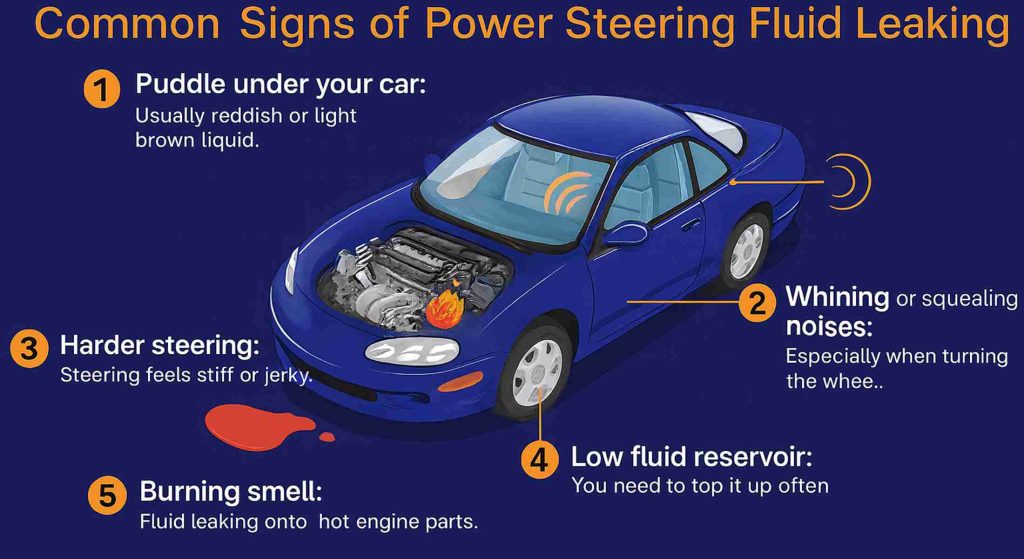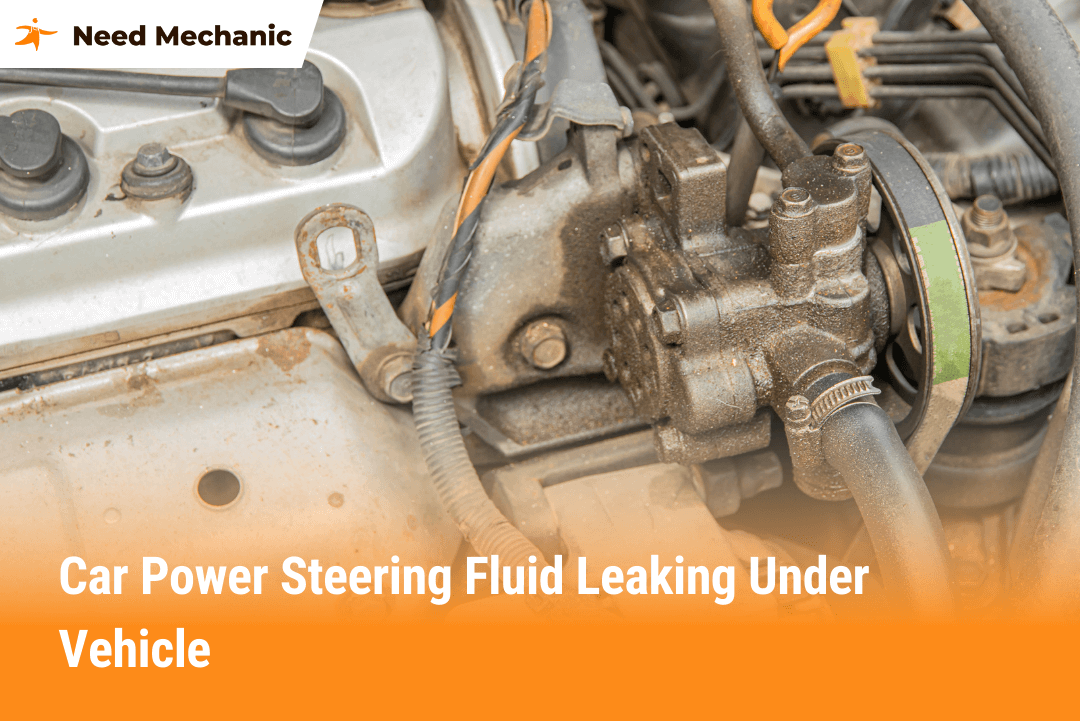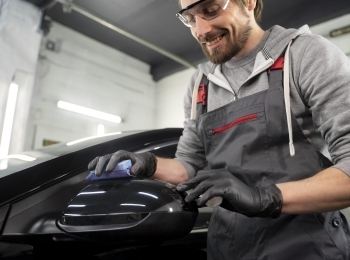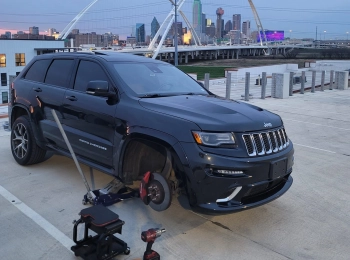Power steering fluid leaks under your car because worn seals, cracked hoses, or a failing pump allow the fluid to escape, reducing the system’s pressure and making steering harder. Many drivers first notice this as a small reddish puddle on the driveway, but ignoring it can quickly lead to stiff steering, loud whining noises, and expensive repairs. This guide explains the most common reasons behind power steering fluid leaking, the warning signs to watch for, fast fixes you can do yourself, and long-term solutions to prevent future leaks.
Table of Contents
What Is Power Steering Fluid?
Power steering fluid is a special hydraulic liquid that transfers power inside your steering system. When you turn the wheel, this fluid helps push the wheels left or right with very little effort from you.
- It lubricates moving parts to reduce wear.
- It prevents rust and corrosion inside the system.
- It helps your steering respond smoothly instead of jerking.
Without it, steering would feel heavy, rough, and unsafe, especially at low speeds or during tight turns.
Why Does Power Steering Fluid Leak?
There are several reasons you might spot a puddle or drip under your car. Here are the most common causes:
1. Worn Out Seals and O-Rings
Seals and O-rings keep fluid inside hoses, pumps, and connections. Over time, heat and age make them crack or shrink, leading to leaks.
2. Damaged Power Steering Pump
The pump is the heart of the system. If it develops cracks, loose fittings, or internal wear, fluid can seep out and reduce pressure.
3. Loose or Cracked Hoses
Hoses carry fluid between the pump, steering rack, and reservoir. If they loosen or split, fluid leaks out, often leaving visible wet spots.
4. Steering Rack Issues
The steering rack itself can leak when internal seals wear out. This is often seen in higher-mileage vehicles.
5. Overfilled or Contaminated Fluid
If fluid is overfilled, it can spill out under pressure. Dirty or wrong-type fluid can also damage seals, leading to leaks.
Common Signs of Power Steering Fluid Leaking
Not all leaks are obvious. Watch for these telltale signs:
- Puddle under your car: Usually reddish or light brown liquid.
- Whining or squealing noises: Especially when turning the wheel.
- Harder steering: Steering feels stiff or jerky.
- Low fluid reservoir: You need to top it up often.
- Burning smell: Fluid leaking onto hot engine parts.

If you notice one or more of these, it’s time to investigate before it becomes dangerous.
Dangers of Ignoring a Leak
Driving with power steering fluid leaking is risky for several reasons:
- Loss of control: Steering may suddenly become very hard.
- Damage to components: Running the system dry damages the pump and rack.
- Fire hazard: Fluid dripping on hot parts can smoke or even ignite.
- Costly repairs: Small leaks are cheap to fix, but ignored leaks often require full pump or rack replacement.
The sooner you act, the less expensive and stressful it will be.
How to Find the Source of a Leak
Finding the exact cause of the leak is the first step to fixing it. Here’s how you can diagnose it at home:
- Check under your car: Look for fresh puddles or wet spots near the front.
- Inspect the reservoir: If it’s low, you definitely have a leak.
- Trace the hoses: Follow them from the pump to the steering rack. Look for cracks, wetness, or loose clamps.
- Examine the pump: Look for drips or shiny wet areas around the pulley.
- Turn the wheel: With the engine running, turn fully left and right. Listen for whining noises that suggest low fluid or pressure.
If you can’t find the source, adding a UV dye to the fluid can help. Shine a UV light and the leak will glow.
Quick Fixes for Power Steering Fluid Leaking
Sometimes, you just need a fast solution to get back on the road. These are not permanent fixes but can buy you time:
- Tighten hose clamps: If fluid drips from a hose connection, tightening may stop the leak.
- Add stop-leak fluid: Some products temporarily swell seals and reduce leakage.
- Top off the reservoir: Always use the correct type of power steering fluid for your vehicle.
These solutions may stop minor leaks or slow down bigger ones, but they are not substitutes for repairs.
Permanent Repair Solutions
For lasting results, you’ll need to fix or replace the faulty parts. Here are the most common repairs:
1. Replace Worn Seals or O-Rings
Cheap and effective if the problem is at hose connections or fittings.
2. Change Leaking Hoses
Hoses are inexpensive compared to pumps or racks. Replacing them can solve the problem quickly.
3. Repair or Replace the Pump
If the pump body or shaft seal leaks, it often needs replacement. A rebuilt pump can save money.
4. Steering Rack Replacement
If fluid leaks from the rack itself, replacement may be the only long-term fix. This is usually the most costly repair.
How Much Do Repairs Cost?
Costs vary based on what’s leaking:
- Seal or O-ring replacement: $20–$100
- Hose replacement: $150–$300
- Power steering pump: $400–$800 installed
- Steering rack: $800–$1,500+
Catching leaks early often saves hundreds of dollars.
Can You Drive With Power Steering Fluid Leaking?
Technically, yes – for a short time but it’s not safe. Steering may suddenly become heavy, which is dangerous in traffic or emergencies. Running without fluid will also destroy the pump. If you must drive, top up the fluid and head straight to a repair shop.
Preventing Future Leaks
Prevention is always cheaper than repairs. Follow these tips:
- Check fluid regularly: Look at the reservoir every few weeks.
- Use the right fluid: Always check your car’s manual.
- Avoid overfilling: Too much fluid creates pressure that causes leaks.
- Inspect hoses yearly: Replace them if they look cracked or soft.
- Flush old fluid: Dirty fluid wears out seals faster.
With these steps, you can extend the life of your steering system and avoid sudden breakdowns.
DIY vs Professional Repairs
If you’re comfortable with tools, replacing a hose or seal may be manageable at home. But pump or rack repairs usually require specialized tools and experience. Consider your skill level and safety before attempting major fixes. Sometimes paying a professional is the cheaper option long-term.
Conclusion: Act Fast, Save Money
A power steering fluid leaking issue might start as just a small drip, but it can quickly turn into a safety risk and an expensive repair. By learning the common causes, watching for warning signs, and acting early, you can keep your car safe and avoid high costs.
Whether it’s tightening a clamp, replacing a hose, or scheduling professional repair, the key is to move fast. Addressing the problem today means smoother steering, safer driving, and peace of mind tomorrow.
FAQs
Why is reddish fluid leaking under my car?
Reddish or light brown liquid under the front of your vehicle is the most common visual indicator of a power steering fluid leak. This specific coloration distinguishes it from oil (black) or coolant (green/orange), and NeedMechanic recommends checking your reservoir level immediately to confirm if the system is compromised before the pump runs dry.
Is it safe to drive with a power steering leak?
Driving with a leak is technically possible for very short distances but is highly unsafe and not recommended. As fluid levels drop, steering becomes heavy and unpredictable, significantly increasing accident risks, and the lack of lubrication can permanently destroy your pump; NeedMechanic advises topping off the fluid and heading straight to a repair shop.
How much does it cost to fix a power steering leak?
Repair costs vary widely depending on the source, ranging from $20 for a simple seal to over $1,500 for a full steering rack replacement. While minor hose repairs often cost between $150 and $300, NeedMechanic suggests getting a professional diagnostic early, as catching a leak before it damages the pump can save you hundreds of dollars.
Does power steering stop leak work?
Stop-leak additives can temporarily swell worn rubber seals and O-rings to halt minor drips, making them a decent emergency solution. However, they cannot fix cracked hoses or broken mechanical parts, and relying on them long-term can gum up the system, so NeedMechanic recommends using them only as a temporary measure until a permanent repair is made.
What are the symptoms of a bad power steering pump?
Beyond visible puddles, a failing pump or low fluid level often causes a loud whining or squealing noise when you turn the steering wheel. You will also feel increased resistance or “jerky” movements in the wheel, indicating that the hydraulic pressure is insufficient to assist your steering inputs.
How to find a power steering leak source?
To pinpoint a leak, inspect the high-pressure hoses, the pump pulley, and the steering rack boots for wetness or grime buildup. If the source isn’t obvious, UV dye can be added to the reservoir; NeedMechanic technicians often use this method with a UV light to identify hairline cracks or seal failures that are invisible to the naked eye.
Can a power steering leak cause a fire?
Yes, a power steering fluid leak poses a significant fire hazard if the fluid drips onto hot engine components like the exhaust manifold. The fluid is flammable, and unlike water-based coolants, it can ignite under high heat, which is a critical reason to address leaks immediately rather than just topping off the reservoir.
Why is my power steering fluid bubbling?
Bubbles or foam in the reservoir usually indicate that air is entering the system through a leak in the suction hose or a failing seal. This aeration reduces hydraulic pressure and causes a groaning noise; NeedMechanic warns that continuing to operate the system with air pockets can cause cavitation damage to the pump internals.
How often should I check power steering fluid?
You should inspect your power steering fluid reservoir every time you change your oil or at least once a month. Regular checks allow you to spot color changes or level drops early; NeedMechanic encourages maintaining clean fluid to prevent the internal corrosion and seal hardening that eventually lead to expensive leaks.
Can I mix different power steering fluids?
You should never mix different types of power steering fluid, as formulations vary by vehicle manufacturer (e.g., ATF vs. synthetic hydraulic fluid). Mixing incompatible fluids can cause seals to swell, degrade, or leak, so always verify the correct type in your owner’s manual or consult a NeedMechanic professional to ensure system compatibility.













Leave a Reply